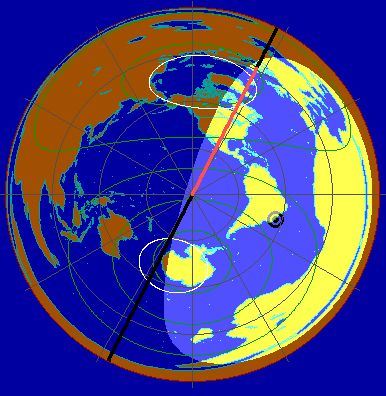

| |
| MAIN OH2BR NEWS REPORTS PITCAIRN SPONSORS LOGS WHY PITCAIRN GUESTBOOK | www.qsl.net |

These are planned operating frequencies of VP6BR:
| BAND | CW | SSB | RTTY |
| 160 | 1.831 | 1.844 | - |
| 80 | 3.506, 3.514, 3.524 | 3.794 | - |
| 40 | 7.004 | 7.044 | - |
| 30 | 10.124 | - | - |
| 20 | 14.024 | 14.179 (EU), 14.244 | 14.074 |
| 17 | 18.074 | 18.144 | - |
| 15 | 21.024 | 21.244 | 21.074 |
| 12 | 24.894 | 24.944 | - |
| 10 | 28.024 | 28.444 | 28.074 |
| 6 | 50.120 | - | - |
| Dear fellow DXers! |
|
We all want to have fun, right? In this case that means that we want, on one hand, to organize a DXpedition that can be called a success, and on the other hand, to work the DXpedition at least once but preferably as many times as possible on different bands and modes with the least possible waste of time and problems. Of course, we want to have the QSL card for our QSOs without too much trouble, too.
What constitutes a successful DXpedition? Is it only the number of QSOs or perhaps also the quality of the QSOs? I believe that there exists a good compromise between these two parameters which can be achieved by good planning by the DXpeditioner and true cooperation between the DXpeditioner and the DXers.
| Target area |
|
In my opinion, for a one-man DXpedition it is best to start on the most reliable and effective transmission mode, and as we all know that is CW, moving from one band to another and follnotowing the propagation to the target area. In the case of VP6BR the target area is naturally Europe, especially Northern Europe, since it has the most difficult path and the shortest openings.
| Multiple QSOs |
|
When there is no propagation to Europe on any band it is time to work other areas. Most of the time the propagation will be favoring Japan and the Americas which are reasonably close. Having worked you all at least once on some band and mode (generally speaking) the rest of the operation will be devoted to working all areas on all bands and modes. Computer statistics will help to keep the balance in doing this. Band changes will be kept to minimum to ensure effectiveness of the operation. All band changes, refuelling breaks and rest periods will be clearly announced so please listen to me!
| Pileup tactics |
|
Split operation is probably the only way to handle the situation, even for a semi-rare country. OH0 is not so rare any more but even there it is impossible to continue working simplex for longer than a few minutes. The usual split would be 2-3 kHz on CW and 5-10 kHz on SSB. RTTY and other digital mode splits will be decided after having gained more experience in working on these modes.
The best thing you can do is to give your call once and then listen. I shall come back with the call or partials of a call that I have copied. If I could not copy anything I shall say: AGAIN! or QRZ! The reason for doing this is to avoid the inevitable chaos resulting from losing the rhythm of calling and listening.
| Lists and nets |
|
There will be no lists or nets for VP6BR. We can and must make our QSOs without any assistance from outsiders. Otherwise their value would be greatly reduced.
| Insurance QSOs |
|
My goal is to make the operator in the other end absolutely sure that he has made a valid QSO and is in the log. I shall also try to make every effort to have all QSOs imported into the log checking feature on this site. Please use it. If for some reason you are not certain of the validity of your VP6BR QSO, you can always call me for a check. If my computer is working I can tell you that you are in the log on that band and mode. If not, that QSO will be our first.
| And finally |
|
The planned three to four months duration of the VP6BR DXpedition allows everybody to work VP6BR on all bands from 6 to 160 within the propagation and on all modes - CW, SSB and digital. Therefore, there is a good reason to stay calm at all situations. If you did not work VP6BR today, tomorrow is a new day! Study the operating pattern of VP6BR and follow my orders and you will eventually be in the log.
|
The ideas outlined above are the result of 39 years of DXing activity. I also warmly recommend to study
the following two publications: Martti Laine, OH2BH:
Where Do We Go Next? and Wayne Mills, N7NG: DXpeditioning Basics.
Thank you, Martti and Wayne! |